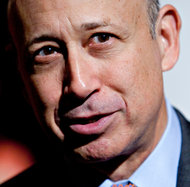CORPORATE EARNINGS Those reporting will include Alcoa (Monday); Chevron (Wednesday); and JPMorgan Chase (Friday).
IN THE UNITED STATES On Monday through Jan. 22, the North American International Auto Show will be held in Detroit. On Tuesday through Friday, the International Consumer Electronics Show will take place in Las Vegas. On Wednesday, the Commodity Futures Trading Commission will vote on a Dodd-Frank proposal to ban proprietary trading by banks.
OVERSEAS On Monday, Chancellor Angela Merkel of Germany will meet in Berlin with President Nicolas Sarkozy of France to discuss the European debt crisis. On Tuesday through Thursday, Treasury Secretary Timothy F. Geithner will meet with officials in China and Japan. On Wednesday, Mrs. Merkel will meet in Berlin with Mario Monti, the Italian prime minister, to discuss the debt crisis. On Thursday, the European Central Bank and the Bank of England will issue their decisions on interest rates.
Article source: http://feeds.nytimes.com/click.phdo?i=2e47811ce1be12cc169f003dc16abf35





